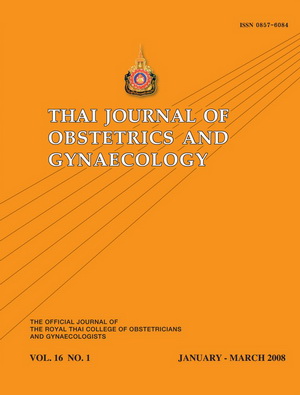Dysmenorrhea in Thai Secondary School Students in Khon Kaen, Thailand
Main Article Content
Abstract
Objective To determine the prevalence of dysmenorrhea among Thai secondary school students, impact on educational activities and the methods of pain relief.
Design Cross-sectional, descriptive study.
Setting Three secondary schools in Khon Kaen, Northeast Thailand.
Material and Method A total of 575 female students-attending grade 10, 11 or 12 at one of three secondary schools- completed a four-page questionnaire, which included baseline characteristics, menstrual pattern, associated symptoms, severity of dysmenorrhea, impact of dysmenorrhea on educational activities and the experience of pain relief.
Results The prevalence of dysmenorrhea was 84.9%. About eleven percent had mild dysmenorrhea, 62.3% had moderate and 25.8% had severe dysmenorrhea. The three most common associated symptoms were mood change (84.8%), fatique (70.7%) and backache (63.7%). Three-quarters (74%) of the dysmenorrheic students reported that their ability to concentrate in class was reduced and 18.2% were absent from school because of it. Most affected students (89.3%) had to take a rest for pain relief. Regarding medications, 73.4% of students used acetaminophen while 16.4% used mefenamic acid.
Conclusion There is a high prevalence of dysmenorrhea among Thai secondary school students. The condition has a negative impact on educational activities. Most sufferers used acetaminophen to treat their symptoms.


